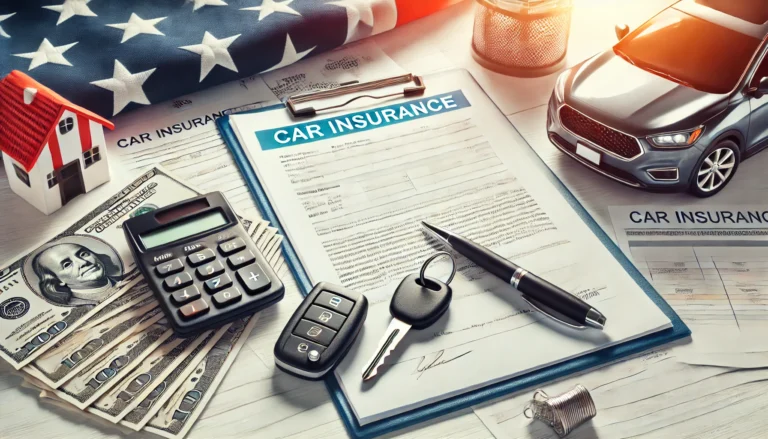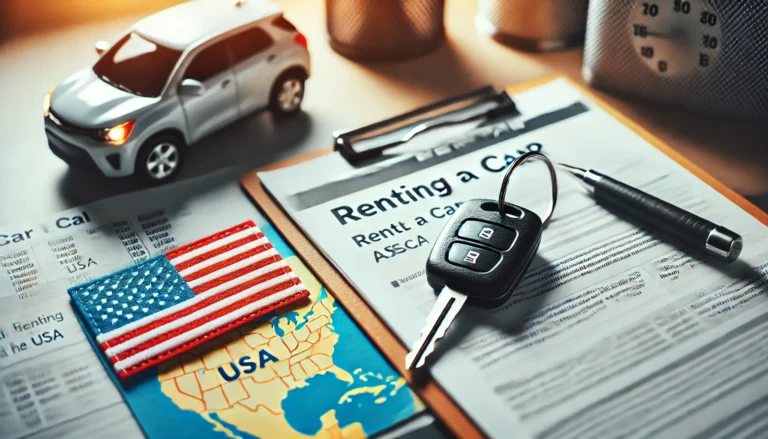How to Purchase a Car in the USA – A Comprehensive Guide
Introduction
Purchasing a car in the United States is a big decision, and knowing the process can help you make an informed choice, avoid pitfalls, and secure a vehicle that fits your needs and budget. Here’s a step-by-step guide to help you navigate the car-buying process in the USA.
How to Purchase a Car in the USA – A Comprehensive Guide
1. Define Your Needs and Set a Budget
Before you start looking at specific cars, clarify your requirements and budget:
- Vehicle Type: Determine whether you need a sedan, SUV, truck, or something else based on your daily requirements.
- New or Used: Decide whether you want a new or used car. New cars offer warranties, while used cars are generally more affordable.
- Set a Budget: Include potential expenses like taxes, insurance, fuel, and maintenance. Many experts recommend that car expenses not exceed 15% of your monthly income.
Tip: Use online calculators to estimate your monthly payment if you’re considering financing.
2. Research Makes and Models
The car market in the U.S. has a vast range of options, so research specific makes and models based on your criteria:
- Reliability and Resale Value: Look for models known for durability and high resale value.
- Fuel Efficiency: Consider the fuel economy if you’re commuting or planning long trips.
- Safety and Features: Look at safety ratings, and check for features like ABS, airbags, and technology such as Bluetooth and backup cameras.
Resources:
- Websites like Edmunds, Kelley Blue Book, and Consumer Reports provide comprehensive reviews, safety ratings, and comparisons.
3. Decide on Financing Options
If you’re not buying the car outright, look into financing options:
- Loan vs. Lease: With a loan, you own the car once it’s paid off. Leasing typically has lower monthly payments but with mileage limits and no ownership at the end.
- Shop for Loan Rates: Check banks, credit unions, and online lenders for competitive interest rates. Some dealerships also offer financing, but it’s often beneficial to have a pre-approval before heading to the dealer.
- Check Your Credit: Your credit score will impact your loan terms. Improve your credit score if needed before applying.
4. Search for Cars
Once you know what you’re looking for, start browsing listings:
- New Car Dealerships: Dealerships are ideal for buying new cars and often offer certified pre-owned options.
- Used Car Dealerships: Check both franchise and independent dealerships.
- Online Platforms: Sites like AutoTrader, CarGurus, and Cars.com let you filter cars by make, model, mileage, and price.
- Private Sellers: Sites like Craigslist and Facebook Marketplace are good for finding private sellers. Be cautious, though, and consider meeting sellers in safe, public areas.
Tip: Certified Pre-Owned (CPO) cars are often a good middle ground, providing quality assurance and warranties on used cars.
5. Inspect the Car and Request a Vehicle History Report
If you’re considering a used vehicle, inspect it thoroughly to avoid costly repairs down the line:
- Vehicle History Report: Use the car’s VIN to get a report from Carfax or AutoCheck, which shows past accidents, repairs, and ownership history.
- Mechanic Inspection: For used cars, having a mechanic inspect the car can reveal hidden issues.
- Test Drive: Always test drive the car to evaluate comfort, visibility, braking, and other essential factors.
Tip: Check for recalls on specific makes and models by visiting SaferCar.gov.
6. Negotiate the Price
Whether buying from a dealership or a private seller, negotiation is key:
- Know the Market Value: Research the fair market value for the make, model, and year of the car on Kelley Blue Book or Edmunds.
- Set a Maximum Price: Determine your maximum offer and be prepared to walk away if the seller doesn’t meet it.
- Trade-Ins: If you have a vehicle to trade, consider negotiating that separately to ensure you get a fair price for both transactions.
Tip: End-of-month or end-of-year timing can work to your advantage as dealerships often offer discounts to meet sales quotas.
7. Finalize Financing and Payment
Once you’ve agreed on a price, it’s time to arrange the payment or finalize financing:
- Dealership Financing: Dealerships often offer financing, but review their terms carefully.
- Bank or Credit Union Loans: If you have a pre-approved loan, provide the dealership with the financing details.
- Private Seller Payment: If buying from a private seller, cash or a cashier’s check is typically preferred.
Tip: Beware of add-ons that dealers may push, such as extended warranties or paint protection. Evaluate each add-on carefully.
8. Complete the Paperwork
Ensure all paperwork is in order before taking ownership of the car:
- Title and Registration: The title should be transferred to your name, and the vehicle registered in your state. Dealerships usually handle this, while private buyers may need to go to the DMV.
- Sales Contract: This outlines the car’s price, financing terms (if applicable), and any included warranties or services.
- Insurance: You’ll need proof of insurance to complete the registration process. Shop for quotes and secure coverage before picking up the car.
Tip: Double-check that the seller has cleared any liens or loans tied to the vehicle.
9. Pick Up Your Car and Drive Home
After completing the paperwork, inspect the car one last time to ensure it’s in the agreed-upon condition. Take a moment to familiarize yourself with the features, especially if the vehicle has advanced tech or safety systems.
Tip: Ask for a quick demonstration of the car’s tech and maintenance points, such as locating the spare tire, using Bluetooth, and managing climate controls.
10. Understand Post-Purchase Steps
Once you have the car, there are a few final steps to ensure a smooth ownership experience:
- Registration and License Plates: Complete any remaining registration steps at your local DMV, if not handled by the dealer.
- Service Schedule: Review the car’s maintenance schedule to stay on top of recommended service intervals.
- Extended Warranties: Decide if you want additional protection through an extended warranty. This can be a good investment if you bought a used vehicle and plan to keep it for several years.
Conclusion
Buying a car in the U.S. is a significant investment, and a thoughtful approach can help you find the right vehicle at a fair price. With the right preparation, research, and negotiation skills, you can enjoy the process and drive away with a car that fits your needs and budget. Happy driving!







